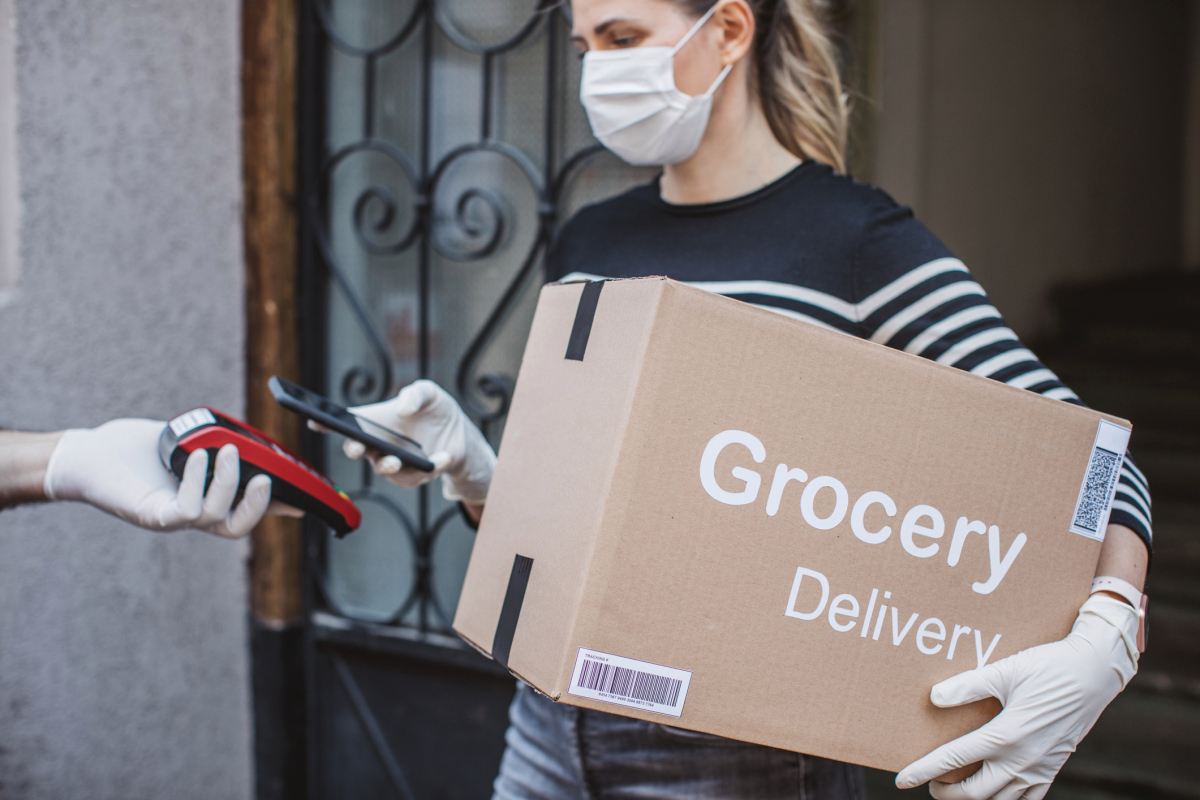https://venturebeat.com/2021/03/13/covid-changed-the-e-commerce-landscape-heres-how-cpg-players-must-adapt/
Join Transform 2021 for the most important themes in enterprise AI & Data. Learn more.
In Ernest Hemingway’s novel “The Sun Also Rises,” there is a famous passage where a main character shares insight into how he went bankrupt: “Two ways. Gradually, then suddenly.”
The food and beverage industry’s shift to online was similar — gradual for the last few years, then sudden because of the global COVID-19 pandemic. In fact, at PepsiCo, we estimate that the pandemic has accelerated the adoption of online grocery by 3-5 years.
The future of the food and beverage industry will be rooted in data and technology, and e-commerce offers the opportunity to test new technological capabilities in a much faster and lower risk environment than brick and mortar. For the past several years, PepsiCo has been bolstering its tech capabilities and redefining what it means to be a consumer packaged goods (CPG) company by accelerating its digital transformation. By investing in these capabilities early, we were well-positioned to handle this year’s sharp increase in demand. For other companies now trying to position themselves to take advantage of this shift, here are a few things we’ve learned so far from our digital transformation journey.
Act like a startup regardless of size
Start with a small, cross-functional team focused on a key problem. Staff this team with top technical and data talent combined with commercially-minded retail or CPG experts. Focus this core team on improving not only the retail customer experience but your overall e-commerce environment. Have this core team start from the consumer and work back to identify key problems to solve in the consumer experience. Ultimately, the in-house solution might begin by solving consumer challenges in one channel but evolve to solve challenges in multiple channels.
Take a future-ready mindset
Be willing to invest ahead of the curve. However, it’s important to recognize that forward investments often face skepticism from internal critics when you pursue an idea where the payback may not be immediate. Most CPGs approach technology investments with a project mindset rather than a product or platform mindset. This shift is challenging. Make the case for getting ahead of the curve, hiring the core team, and working on a platform that might not meet traditional ROI hurdle rates but has the probability of long-term payback with larger business returns. Start small and find early wins to gain credibility. Communicate early and often, be transparent, and build credibility to make it easier for important stakeholders to understand the value of what you’re building.
At PepsiCo, we built some early marketing automation to allow us to execute campaigns more efficiently. At first, after a test with one customer and a limited number of campaigns, this saved us a very small amount of time. But we knew that as the business and market grew, the scale and complexity would, too — and this automation would then have a much bigger impact. We also learned that adding additional internal and external signals, such as stock levels and competitive activity, would help refine the marketing automation tool. Over the past several years, we’ve expanded the number of partners and types of marketing. Now the marketing platform automates most of our retail media campaigns. Most recently, during the COVID-19 pandemic’s volatility, this platform allowed us to make thousands of decisions in a scaled and automated way.
Unlock your competitive advantage
Betting on first-mover advantage and ahead-of-the-curve investment requires the foresight to begin work and lay the foundation for when consumers are ready. The question is, is it more advantageous to buy off-the-shelf solutions or focus on developing in-house IP? Commerce platforms must constantly evolve to meet consumer needs. Off-the-shelf solutions are generally built to service the needs of many enterprise customers and can often lead to slow lead time for changes or lowest common denominator type solutions. So building in-house may offer more flexibility and a strategic competitive advantage. By providing the flexibility to move with speed, iterate and be responsive, in-house solutions also allow for ways of working where dedicated cross-functional teams have the ability to pivot quickly and remain agile. A custom-built platform benefits suppliers and retailers as well. You’re able to test and learn more often and apply those learnings to benefit your retail partners and meet consumer demand.
Foster transparency and sharing with partners
For CPGs looking to grow in e-commerce, navigating retailer relationships is crucial. Mutual trust and transparency of data and sales information is key. When partners share more data, CPGs can show how this will drive sales or improve profitability. Insight and visibility into a retailer’s forecast, sales, inventory levels, and future orders allow suppliers to better manage in-store and digital in-stock rates, fill rates, and assortment. Through new digital capabilities and machine learning algorithms, both parties can drive sales and increase profit margins together.
Implement sophisticated tech to successfully manage digital shelves
Unlike physical store shelves, which retailers reset a few times a year, “digital shelves” generate in real time the moment shoppers search for a product or browse through a product category. And oftentimes they show customized results depending on the location or profile of the shopper. The fundamental difference between these two scenarios is that digital shelves are determined by algorithms, which require a completely new layer of interaction between retailers and suppliers.
To efficiently deploy digital marketing spend at scale, companies need to effectively make hundreds of thousands of decisions a day — including how much to bid for different ads as consumers search for products and digital shelves are created in real time. We’ve developed and implemented this marketing automation platform across multiple retailers, processing high volumes of valuable data to optimize marketing spend and ensure digital shelves are intuitive and frictionless to shoppers — both new and returning. Our marketing automation platform connects to retailer advertising APIs, manages tens of thousands of keywords, and calculates bid changes multiple times a minute to maximize the effectiveness of our ad spend. The platform is based on Elixir on the back end and React on the front end. We chose Elixir because of its ability to scale and handle a massive amount of data in near real-time. React enables rapid development of reusable rich components for end users, which helps with data visualizations and taking bulk actions on sets of keywords and campaigns. In addition, we use Airflow for data ingestion.
During the pandemic we saw Boomers drive the surge in adoption of e-grocery. Having an easy-to-use search and onsite navigation is key for many first-time shoppers as they’re familiarizing themselves with the e-commerce ecosystem. And since we know consumers tend to build their online baskets by looking at their past purchase history, it’s important we’re part of their first basket to become a habitual purchase. This is just one of the ways technology, data, and insights are core to our e-commerce strategy. As we grow and learn, we continually work with our retail partners to determine data sets that could be mutually beneficial to help grow and optimize our businesses.
The global pandemic may have forced the shift to digital in CPG industry, but the impact of the shifts is likely to be permanent. To survive in this new environment, companies need to act differently and think differently about technology investments. It’s important to focus on a technology-forward approach, unlock your competitive advantage, and embrace new ways to foster operational agility. Pivots made now will pay dividends long into the future as the change in consumer behaviors become permanent.
Vince Jones is Head of eCommerce at PepsiCo.
VentureBeat
VentureBeat’s mission is to be a digital town square for technical decision-makers to gain knowledge about transformative technology and transact.
Our site delivers essential information on data technologies and strategies to guide you as you lead your organizations. We invite you to become a member of our community, to access:
- up-to-date information on the subjects of interest to you
- our newsletters
- gated thought-leader content and discounted access to our prized events, such as Transform 2021: Learn More
- networking features, and more













